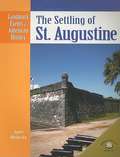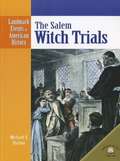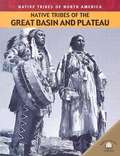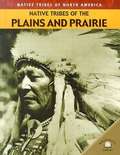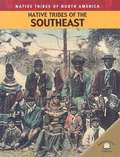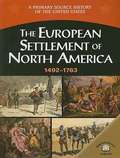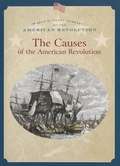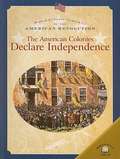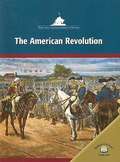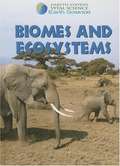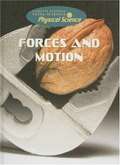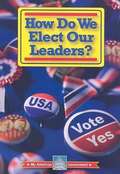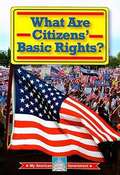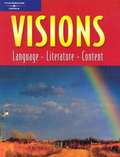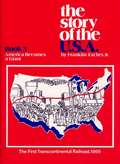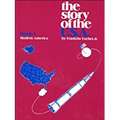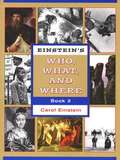- Table View
- List View
The Settling Of St. Augustine (Landmark Events In American History Series)
by Janet RieheckyTraces the history of St. Augustine, Florida, from its founding and development as a Spanish colony and military outpost in 1565 through the early eighteenth century, and discusses the impact of European colonialization on the native
The Salem Witch Trials (Landmark Events In American History Series)
by Michael V. UschanThe Salem Witch Trials by Michael V. Uschan
Native Tribes of the Great Basin and Plateau (Native Tribes of North America Ser.)
by Michael Johnson Duncan ClarkeAn introduction to the history, culture, and people of the many Indian tribes that inhabited the region of the present states of Utah and Nevada and the mountainous area of the northwest United States and southern British Columbia in Canada.
Native Tribes of the Plains and Prairie (Native Tribes of North America)
by Michael JohnsonThis series provides a comprehensive reference library on the Native nations and peoples of North America, covering essential information on 400 different tribes. Organized according to traditional geographical and cultural groupings, this collection provides an informative view of the diversity of Native North America, from the Canadian Arctic to the Rio Grande. Each volume features historical photographs, regional maps, historic and updated census information, a guide to prominent museums specializing in Native culture, and a comprehensive index to the tribes featured in all six volumes.
Native Tribes of the Southeast (Native Tribes of North America Ser.)
by Michael Johnson Duncan ClarkeAn introduction to the history, culture, and people of the many Indian tribes that inhabited the region along the south Atlantic coast of the United States, around the Gulf of Mexico, and west to the Mississippi River.
The European Settlement Of North America (A primary Source History Of The United States )
by George Edward StanleyFulfill the need to incorporate primary sources in your American history reports and projects with this engaging series. Each book uses a variety of primary source documents to provide a unique perspective on historical events. <p><p>Public documents, including newspaper articles, speeches, historic acts of legislation, and treaties give readers a broader understanding of the events that shaped our nation, while personal diaries and letters provide intimate portraits of the people who influenced or witnessed those events. Featuring words drawn straight from the shapers of history, this captivating series gives readers a richer understanding of the nation's history.
The Causes Of The American Revolution (World Almanac Library Of The American Revolution)
by Dale AndersonThis comprehensive, eight-volume series tells the story of the founding of the United States and helps students understand that the American Revolution was more than just a series of battles—it was a revolution of ideas. Each title explains the important political, military, and social aspects of the Patriots' struggle for independence. Using quotations from primary sources and biographical focus boxes, this series presents the story of the American Revolution in clear, engaging text and gives students a deeper understanding of why the war was fought and how it was won. An ideal resource on a key curriculum topic.
The American Colonies Declare Independence (World Almanac Library Of The American Revolution)
by Dale AndersonThis comprehensive, eight-volume series tells the story of the founding of the United States and helps students understand that the American Revolution was more than just a series of battles—it was a revolution of ideas. <P><P>Each title explains the important political, military, and social aspects of the Patriots' struggle for independence. Using quotations from primary sources and biographical focus boxes, this series presents the story of the American Revolution in clear, engaging text and gives students a deeper understanding of why the war was fought and how it was won. An ideal resource on a key curriculum topic.
The American Revolution (Wars That Changed American History)
by Deborah H. DeFordThis series examines eight major conflicts in American history, describing how each has shaped and altered the nation and how the United States' role in international conflicts has affected world history. <P><P>Primary sources and archival images help bring each era to life, while maps, sidebars, and biographies of military and political leaders reinforce the text. <P><P>Ideal for reports, each volume allows students to investigate a topic at their own pace and to delve deeper into key historical events touched on in their American history textbooks.
Biomes and Ecosystems
by Barbara DavisGareth Stevens Vital Science books are designed to help prepare students for NCLB science testing by reinforcing key concepts across the science curriculum. the six volumes in Earth Science use clear language and a variety of photographs, illustrations, and diagrams to help students understand the properties of rocks, soils, water, gases, and fossils. Weather, biomes and ecosystems, and earth's core and crust are also covered, making this a comprehensive and indispensable resource. image descriptions present
Forces and Motion
by Robert SneddenGareth Stevens Vital Science books are designed to help prepare students for NCLB science testing by reinforcing key concepts across the science curriculum. The eight volumes in Physical Science use clear language and a variety of photographs and diagrams to increase students' understanding of forces and motion; light, heat, electricity, magnetism and sound; and the properties of objects they encounter in their daily lives. Two volumes discuss the history of science and the role of science in society. This book introduces Newton's Laws of Motion, friction, pressure, and more.
How Do We Elect Our Leaders? (My American Government)
by William David ThomasIn what ways are the branches of government like a basketball game? How can a school yard game's rules liken themselves to a constitution? Through engaging analogies and introductions, our new government series gets students ready for election 2008. Correlated to the fourth and fifth grade social studies curriculum, My American Government introduces students to how our government works. Students learn about the U.S. Constitution, the branches of government, citizens' basic rights, and how we elect our leaders.
What Are Citizens' Basic Rights? (My American Government)
by William David ThomasDescribes the civil rights guaranteed in the Constitution, especially the Bill of Rights, and discusses First Amendment rights, the rights of the accused, and the responsibilities of citizenship.
Visions Book B: Language, Literature, Content
by Mary Lou Mccloskey Lydia StackUse this book to "grow" your English, to talk about what you write and read. Use it to learn lots of new words and new reading strategies you'll need.
Solving Language Difficulties: Remedial Routines
by Amy Steere Caroline Peck Linda KahnThis basic workbook can be used in any corrective reading program. It deals extensively with syllables, syllable division, prefixes, suffixes, accents, and spelling rules.
Early Reading Comprehension in Varied Subject Matter: Book A
by Jane ErvinThis series has a consistent format that allows students in the same class to use different levels. It builds reading comprehension skills, contextual vocabulary skills, and provides cross-curricular reading practice via content-area topics.
Early Reading Comprehension in Varied Subject Matter: Book B
by Jane ErvinThis series has a consistent format that allows students in the same class to use different levels. It builds reading comprehension skills, contextual vocabulary skills, and provides cross-curricular reading practice via content-area topics.
Megawords 2: Decoding, Spelling, and Understanding Multisyllabic Words, Common Prefixes and Suffixes
by Kristin Johnson Polly BayrdNIMAC-sourced textbook
Megawords 3: Decoding, Spelling, and Understanding Multisyllabic Words, Schwa Sound
by Kristin Johnson Polly BayrdNIMAC-sourced textbook
The Story Of The USA: America Becomes a Giant (Book Three)
by Franklin Jr. EscherIdeal for developing reading comprehension skills, this series presents basic topics in American history and includes illustrations, vocabulary lists, and questions.
The Story of the U.S.A.: Book 4 Modern America
by Franklin EscherWelcome to the world of American history. You are going to read about our country's past. History is filled with exciting stories and interesting people. This book will tell you about some of them. It can also help you practice ways to read and study that you can use in all your classes, not just in history class.
Vocabulary From Classical Roots 4
by Lee MountainIn this book you will get to know groups of words descended from Latin and Greek roots. Each word family has a root that is connected to a concept, or idea.
Jarvis Clutch - Social Spy
by Melvin D. LevineSocial interactions are often the most stressful aspect of adolescent life. In Jarvis Clutch--Social Spy, Dr. Levine teams up with fictitious eight-grader Jarvis Clutch to offer insight and advice on the middle school social scene.
Einstein's Who, What And Where: Book 2 (Einsteins Who, What, Where Ser.)
by Carol EinsteinWhy were people in Salem, Massachusetts, accused of being witches in the 1690s? How were books made before the printing press was invented? Why was DDT, a popular pesticide, banned in the United State
The Paragraph Book, Book 1: Writing the How-to Paragraph
by Dianne Tucker-LaplountIt is the first in a series of four books on paragraph writing and is all about is about using the FNTF (First, Next,Then, Finally) formula to write easily and clearly.
